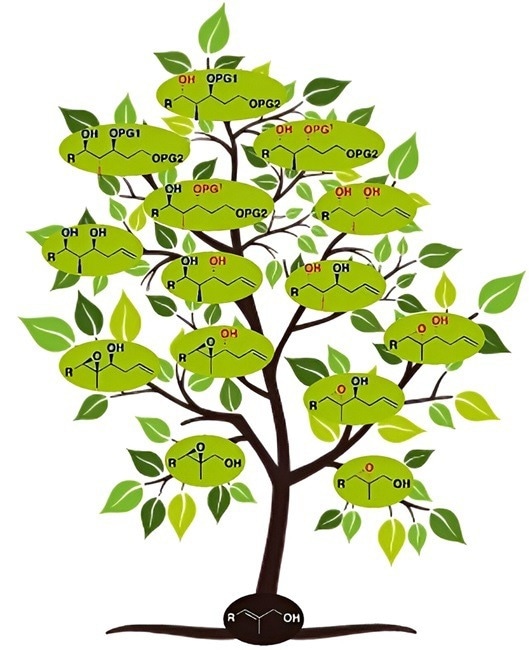Natural substances in particular mirror-image variations and with a high degree of purity are required for the synthesis of prospective medications or natural goods. For the first time, scientists at the University of Bonn have created all eight potential polypropionate building block variations from a single starting material using a simple procedure. Angewandte Chemie International Edition has now published the study.

Image Credit: Angewandte Chemie International Edition (2023). DOI: 10.1002/anie.202317525
Polypropionates are natural substances that can save lives. They are required to produce reserve antibiotics, which are only utilized to treat diseases caused by drug-resistant bacteria. In nature, chiral substances occur in two versions that have the same chemical formula but are mirror images of one other, similar to a right and left hand. Chemists define this phenomenon as “chirality,” which means “handedness.”
What is interesting is that the mirror-image forms can have very different properties. One well known example is undoubtedly carvone. The dextro-, or ‘right-handed,’ form of this molecule smells of caraway, while its levo-, or ‘left-handed,’ form is what gives peppermint its distinctive odor.
Andreas Gansäuer, Professor, Kekulé Institute of Organic Chemistry and Biochemistry, University of Bonn
Additionally, numerous drugs contain compounds with different characteristics in their mirror-image forms.
“The different properties also cause different effects inside the human body, so it's vital to use the right form in a drug,” Gansäuer stated.
Additionally, he is a part of the University of Bonn's Matter Transdisciplinary Research Area.
Gansäuer further stated, “Although polypropionates occur naturally, we need them in a high degree of selectivity—i.e., in a specific variant—and with a high level of purity to use them in drug manufacture. Up until now, however, the process for making synthetic polypropionates has been complicated and time-consuming.”
Now, he and his group have developed a process that makes it simple to manufacture the required variations.
Gansäuer added, “We are able to make eight different variants from a single starting material, an alcohol in this case.”
Chemicals called polypropionates are made up of hydrocarbon chains that alternate between methyl and hydroxyl groups.
“The different substituents attached to the three carbon atoms on the chains give us a total of eight different forms that we call isomers of our polypropionate building blocks,” Gansäuer added.
The first four precursors to the eight isomers were created by the University of Bonn researchers using two established techniques with the addition of a novel one called hydrosilylation.
“The isomers are produced by us adding either fluoride for the dextro-form or titanium for the levo-form,” Gansäuer noted.
The procedure is similar to how a tree's branches grow. Everything begins at the trunk, or in this example, the alcohol, from which two branches initially diverge. This results in mirror-image variations of an epoxide, a three-membered ring structure containing an oxygen atom.
From these initial two, two further branches are created by incorporating an olefin, or carbon-carbon double bond, into each. During the last stage, called the hydrosilylation of epoxides, these four branches are divided into eight different ones.
The method has several advantages.
“Our method works at room temperature. Some of the classical reactions have to be carried out at very low temperatures. Also, we don’t need to use precious metals as catalysts anymore, meaning that our method is more sustainable,” Gansäuer further added.
“Our work will be able to be used as the basis for synthesizing drugs. When you're manufacturing medicines, you never know in advance what form of a substance you'll need. Substance screening often involves testing thousands of isomers to identify the right compound. If you can produce eight different forms, as shown here, you'll also be able to make as many other interesting substances as you want, making it more likely you'll find an effective structure,” Gansäuer concluded.
Journal Reference:
Pieper, K., et. al. (2024). A Flexible Synthesis of Polypropionates via Diastereodivergent Reductive Ring-Opening of Trisubstituted Secondary Glycidols. Angewandte Chemie International Edition. doi:10.1002/anie.202317525.